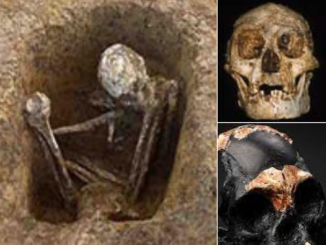The coin jar containing ancient copper coins was discovered by people weighing about 3 kg and had turned green due to oxidation.

A clay jar containing a large amount of coins was buried under a farm in eastern Poland in the 17th century. Photo: Paweł Ziemuk/WKZ Lublin
Michal Lotys discovered a trove of ancient coins while using a metal detector to find spare parts for tractors on a farm near the village of Zaniówka, eastern Poland, at the end of February, Live Science reported on March 8. The bronze coins were in a broken siwak, a clay pot with a handle and a narrow neck, buried in a field.
Using a metal detector to search for buried monuments without a permit is illegal in Poland. So Lotys contacted archaeologists in the nearby city of Lublin.
The team of experts went to the farm the next day to find out. They noticed that the place where the treasure was hidden had clear marks on the ground, meaning the money was buried intentionally, not accidentally.
The treasure includes about 1,000 17th-century Polish and Lithuanian bronze coins, according to Dariusz Kopciowski, director of Lublin’s heritage conservation agency. The oxidation process after about 400 years in the ground caused all the copper coins to turn green, and many coins were worn away layer by layer. However, there are still about 115 separable coins left. The entire treasure weighs about 3 kg.
Tests showed that most of the coins were produced between 1663 and 1666 at mints in Warsaw (Poland), Vilnius (Lithuania) and Brest (Belarus). This type of coin is called “boratynki” after Tito Livio Burattini, manager of the Kraków mint in the 17th century.
Boratynki is not of high value and can be used for everyday transactions. The entire treasure trove of 1,000 coins in Zaniówka only bought “about two pairs of shoes” at the time. However, they will now have a higher value because they are antiques.
Kopciowski said the treasure will be transferred to experts at a museum in the city of Biała Podlaska for further study. In addition to the coins, the team also found fragments of a clay vase and several pieces of cloth from the same period at the site in Zaniówka.


